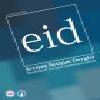Türkiye’de Çalışıyor Mu? Gündem Belirleme Ağı Çalışması
Gündem Belirleme Ağı, Medya, Kamuoyu
Does “It” Work in Turkey? A Network Agenda-Setting Research
Network Agenda Setting, Media, Puplic Relations,
___
- Cheng, Y. and Chan, C. M. (2015). The third level of agenda setting in contemporary China: Tracking descriptions of Moral and National Education in media coverage and people’s minds. International Journal of Communication, 9, 1090–1107.
- Dearing, J. ve Rogers, E. M. (1996). Communication Concepts: 6 Agenda setting. Thousand Oaks: Sage Publications.
- Dingil, A. E. (2018). Üçüncü aşama gündem belirleme araştırması: Sağlık haberleri özelinde medya ve kamuoyu bağlantısı [A third stage agenda-setting research: Media and public linkage in health news]. Unpublished PhD Thesis. Eskişehir: Anadolu University Institute of Social Sciences.
- Guo, L. ve McCombs, M. (2011a). Network agenda setting: a third level of media effects. Boston: Paper presented at the ICA,.
- Guo, L. ve McCombs, M. (2011b). Toward the third level of Agenda Setting theory: A Network Agenda Setting Model. St. Louis: Paper presented at the AEJMC.
- Guo, L. (2012). The application of social network analysis in agenda setting research: a methodological exploration. Journal of Broadcasting & ElectronicMedia, 614 - 631.
- Guo, L., Vu, H. T. and McCombs, M. (2012). An expanded perspective on agenda setting effects. exploring the third level of agenda setting. revista de Comunicación, 51 - 68.
- Guo, L., Chen, Y. K., Vu, H., Wang, Q., Aksamit, R., Guzek, D., Jachimowski, M. and McCombs, M. (2015). Coverage of the iraq war in the united states, mainland China, Taiwan and Poland: A transnational network agenda-setting study. Journalism Studies, 16 (3), 343–362.
- İspir, N. B. and Kılıç, D. (2017). Kasım 2015 genel seçimlerinde köşe yazarlarının Twitter gündemine yönelik bir sosyal ağ analizi uygulaması [A social network analysis application for the columnists of the November 2015 general elections]. E-kurgu, 25 (1), 77-83.
- Kadry, S. and Al-Taie, M. Z. (2014). Social Network Analysis: An Introduction with an Extensive Implementation to a Large-Scale Online Network Using Pajek. E-book: Bentham.
- McCombs, M., Danielian, L. and Wanta, W. (1995). Issues in the News and the Public Agenda: The Agenda-Setting Tradition. T. L. Glasser, ve C. T. Salmon (Ed.).Public Opinion and the Communication of Consept içinde (281-300). New York: The Guilford Press
- McCombs, M. E., Shaw, D. L. and Weaver, D. (1997). Communication and democracy: exploring the intellectual frontiers in agenda setting theory. Mahwah, NJ: Erlbaum.
- McCombs, M. E., Lopez-Escobar, E., and Llamas, J. (2000). Setting the agenda of attributes in the 1996 Spanish general election. Journal of Communication, Spring, 50 (2), 77-92.
- McCombs, M. E. (2004). Setting the agenda: The mass media and public opinion Cambridge: Polity Press.
- Salwen, M. B. (1988). Effects of Accumulating of Coverage On Issue Salience in Agenda-Setting. Journalism Quarterly 65 (1), 100-106
- Tashakkori, A. and Teddlie, C. (2010). Sage Handbook of Mixed Methods in Social & Behavioral Research (2nd Ed.). Thousand Oaks, CA: Sage.
- Vargo, C. J., Guo, L., McCombs, M., and Shaw, D. L. (2014). Network issue agendas on Twitter during the 2012 U.S. Presidential Election. Journal of Communication, 64 (2), 296-316.
- Vu, H. T., Guo, L., and McCombs, M. (2014). Exploring “the World Outside and the Pictures in Our Heads” : A Network Agenda-Setting Study. Journalism & Mass Communication Quarterly, 91(4), 669-686.
- Yazıcıoğlu, Y. and Erdoğan, S. (2004). Spss uygulamalı bilimsel araştırma yöntemleri [Spss applied scientific research methods] Ankara: Detay.
- Yüksel, E. (2001). Medyanın gündem belirleme gücü [The agenda-setting power of the media] Konya: Çizgi.
- http1: https://www.medyatava.com/tiraj (Erişim tarihi: 12.06.2019)
- http2: http://www.tuik.gov.tr/PreTablo.do?alt_id=1018 (Erişim tarihi: 12.06.2019)
- http 3: http://gazetetirajlari.com/GunlukTirajlar.aspx (Erişim tarihi: 21.3.2018)
- ISSN: 1308-3198
- Yayın Aralığı: 2
- Başlangıç: 2009
- Yayıncı: Erciyes Üniversitesi İletişim Fakültesi
Medya ve İktidar İlişkisi Bağlamında Demokrat Parti’nin İlan ve Reklam Politikaları
Sosyal Medya Alanına Bourdieucü Bir Yaklaşım: Facebook Üzerine Bir İnceleme
Katharsis Bir Duygu Olarak Şiddetin Marka Tutumuna Yansıması
Yeni Medyada Kimlik İnşası: YouTuber Kimliğine İlişkin Bir İnceleme
Yazının Dijital Ortamda Rezonansı ve İçeriğin Yüzeyselleşmesi
